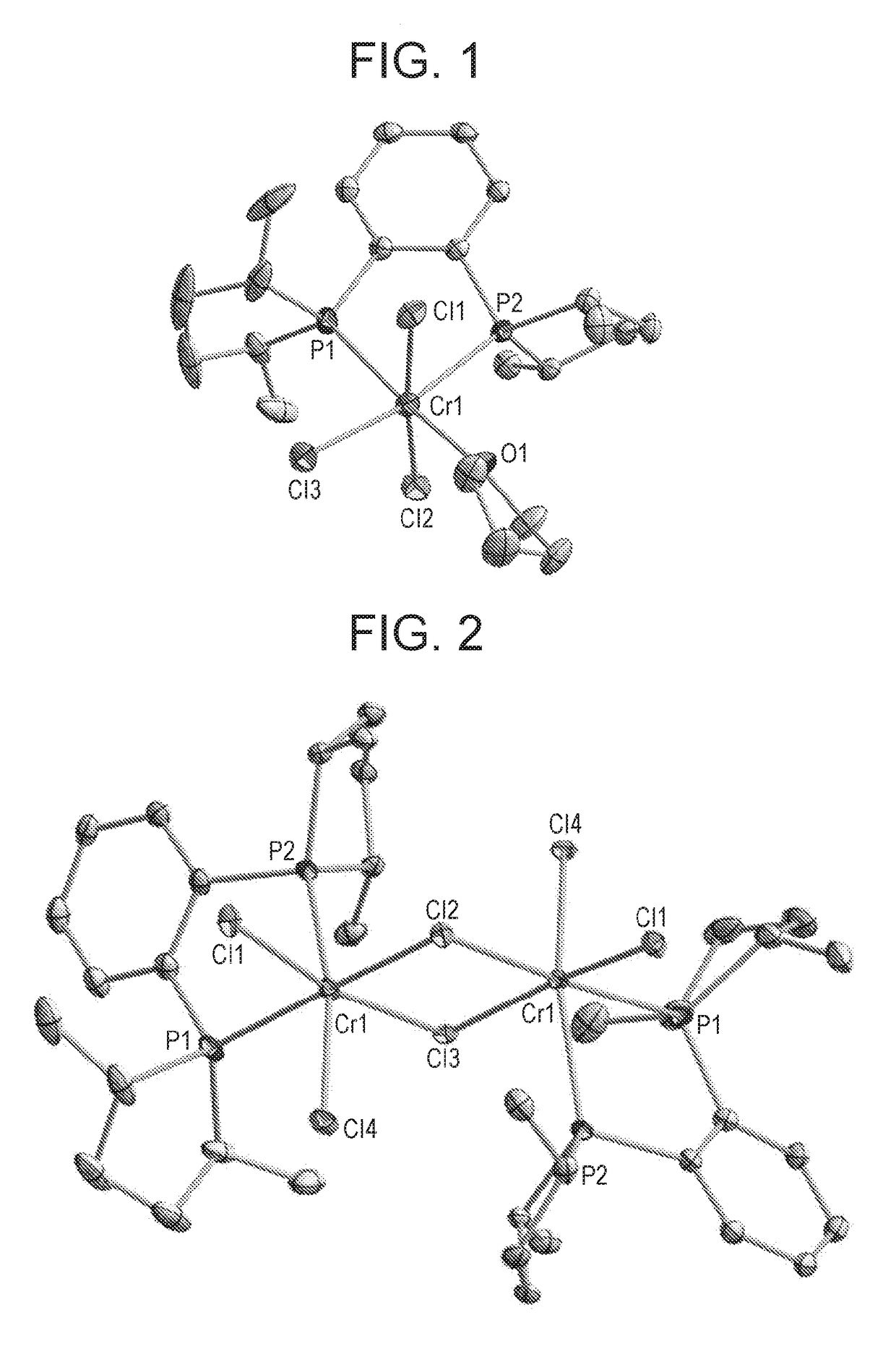Phosphacycle compound and process for production thereof
a technology of phosphacycle compound and process, which is applied in the direction of physical/chemical process catalysts, organic compounds/hydrides/coordination complexes catalysts, hydrocarbon preparation catalysts, etc., can solve the problems of catalyst efficiency, catalyst selectivity, and catalyst deactivation,
- Summary
- Abstract
- Description
- Claims
- Application Information
AI Technical Summary
Benefits of technology
Problems solved by technology
Method used
Image
Examples
examples
[0341]All preparation reactions carried out at temperatures below −50° C. were conducted outside of a glovebox under inert atmosphere using Schlenk line techniques. All preparation reactions carried out under elevated pressure were conducted outside of a glovebox. Depending on the elevated pressure preparation reaction, the reactor involved may have been charged in a glovebox. Unless otherwise specified, all other reactions were conducted in inert (nitrogen or argon) atmosphere gloveboxes. All commercial chemicals were obtained from Sigma-Aldrich Corporation, Acros Organics, Strem Corporation, Oakwood Chemical, Oxchem Corporation, or Thermo Fisher Scientific, Inc.
[0342]Solvents used in the preparation reactions were purified as follows: Non-chlorinated solvents (e.g., tetrahydrofuran (THF), toluene, hexane, diethyl ether) were purified in a manner similar to the method of Pangborn et ah (“Safe and Convenient Procedure for Solvent Purification” Pangborn, A. B.; Giardello, M. A.; Grub...
preparation examples
Ligating Compound Preparation Examples
Preparation of ((rac)-N-(diphenylphosphanyl)-N-methyl-2,5-diphenylphospholan-1-amine), L553
Step 1. Preparation of 1-[(N,N)-dimethylamino]-1-r-oxo-2-t,5-t-diphenyl-phosphol-3-ene
[0344]
[0345]In a glovebox, a 200-mL jar was charged with aluminum chloride (22.84 g, 171.3 mmol) and 50 ml, of anhydrous methylene chloride. The jar was placed in a freezer at −30° C. for 15 minutes then removed. Dimethylphosphoramidous dichloride (25.00 g, 171.3 mmol) was added to a stirred suspension. Once everything was dissolved, the jar was removed from the glovebox and the contents transferred to a 500-mL three-necked round bottom flask equipped with an addition funnel and nitrogen inlet. The flask and its contents were cooled in an ice bath. 1,4-Diphenylbutadiene (32.12 g, 155.7 mmol) was dissolved in anhydrous methylene chloride (˜200 mL) in the glovebox, transferred to the addition funnel, and slowly added under nitrogen atmosphere to the reaction mixture over a ...
PUM
 Login to View More
Login to View More Abstract
Description
Claims
Application Information
 Login to View More
Login to View More - R&D
- Intellectual Property
- Life Sciences
- Materials
- Tech Scout
- Unparalleled Data Quality
- Higher Quality Content
- 60% Fewer Hallucinations
Browse by: Latest US Patents, China's latest patents, Technical Efficacy Thesaurus, Application Domain, Technology Topic, Popular Technical Reports.
© 2025 PatSnap. All rights reserved.Legal|Privacy policy|Modern Slavery Act Transparency Statement|Sitemap|About US| Contact US: help@patsnap.com



